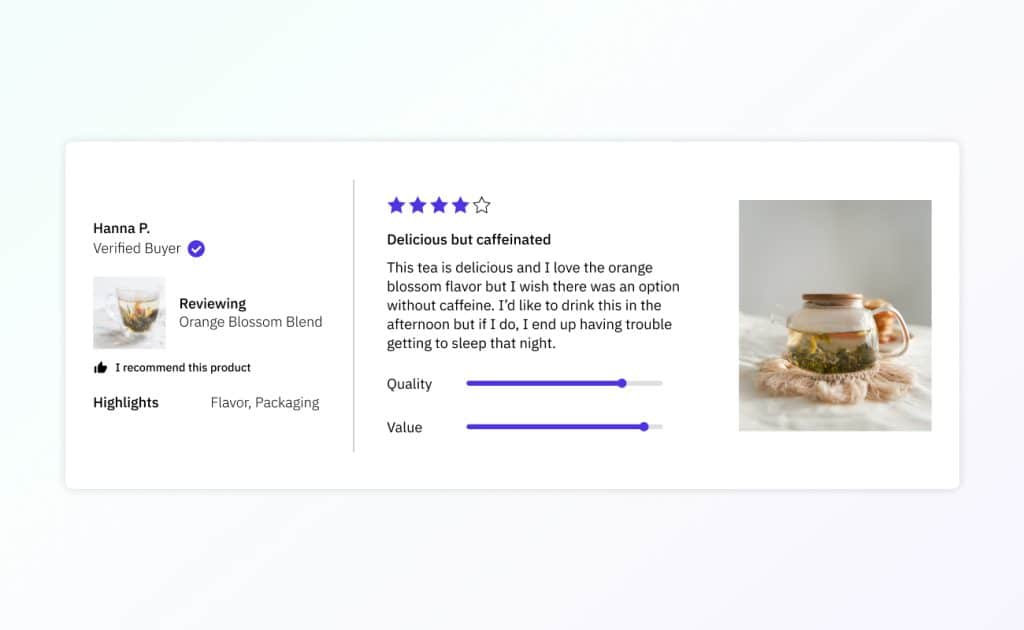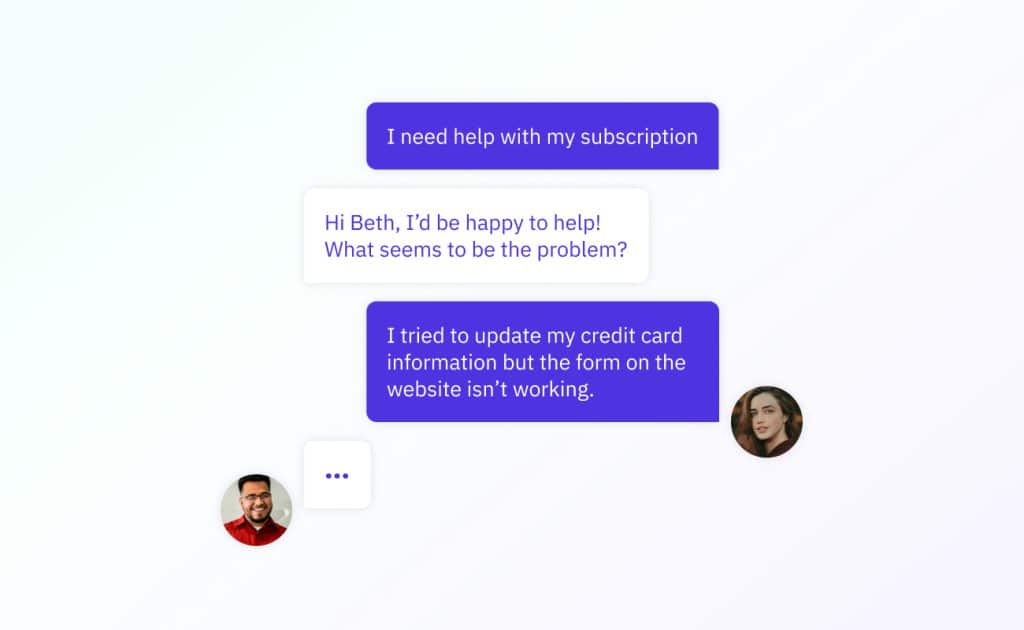
- Customer Retention
- Product
- Quizzes
Boost subscription sales with new Subscription Recommendations
Katie Vaught | Mar 18, 2025
Apr 18, 2023 | 6 minute read

Lindsay Kolinsky
Director of Marketing
In an environment where online merchants are constantly looking for a competitive edge, customer experience (CX) has become a powerful weapon. As we’ve covered, brands that invest in CX in the right way see several benefits, including improved loyalty and retention, increased brand advocacy, and improvements to their bottom line.
In our last blog, we explored some of the most important elements of building a customer experience program, including creating a customer feedback loop. In this piece, we’ll dive deeper into what it means to create a customer feedback loop to gather insights straight from your customers, as well as how you can use it to uplevel the experiences you provide them.
A customer feedback loop is a process that involves collecting, analyzing, and using feedback from your customers to improve products, services, or the overall customer experience. The feedback loop usually consists of multiple stages, including:
As mentioned, by creating a customer feedback loop, brands can gain valuable insights into customer needs and preferences, improve customer satisfaction, and ultimately drive business growth. But in order to do so, you must have the right methods in place to gather the most relevant and actionable information.
Here are three critical components you should be using to create a successful customer feedback loop:
If you know anything about us, it’s that we love customer reviews. And for good reason — customer reviews are one of the best ways to understand how someone feels about your products or services. And they can be an extremely valuable piece of your feedback loop.

Star ratings combined with product & customer attributes are a great way to fill in gaps and identify ways to improve your products and overall offering. The type of insights you can get from reviews is seemingly endless. For instance, a customer might describe in a review how poor packaging resulted in the product breaking during delivery — something which you can quickly fix with your supply chain team.
Feedback from reviews can also stimulate new product ideas for your organization. Maybe you sell fitness equipment and consistently see feedback in your reviews that buyers love the product but the equipment takes up too much space in smaller apartments. This could be an opportunity for your brand to fill in the gap and make a new product that’s better suited for apartment living.
From identifying missteps to product inspiration, reviews will provide you with some of the most valuable insights for your customer feedback loop.
While a review is mainly limited to product feedback, surveys can help complement your reviews feedback loop and fill in knowledge gaps about your customers.
To maximize your customer surveys, ask detailed questions that provide strategic observations that will allow you to make better decisions. For instance, you may ask them about their favorite brands and styles and the most important product attributes they look for when making a purchase.
As Jess Cervellon, Head of Customer Experience at Feastables notes, “For my customer feedback surveys, I select a few questions that go past the basics, such as the person’s overall shopping experience. I look for the heavy hitters that provide me with the information to improve the customer experience.”

It’s also a good idea to ask questions related to action and intent. These can help you address things that have an impact on conversions, such as abandoned carts. With a highly relevant survey, you can identify the barriers that prevented a customer from making a purchase and follow up with potential solutions or offers that end up transforming an abandoned cart into a sale.
Additionally, if you’re planning to introduce a new product, surveys allow you to elicit feedback on whether or not there is a market for it, which types of customers are most likely to purchase it, and more. Not only will this help you make key decisions about the product, but it’ll also fuel your entire go-to-market strategy for it.
While the goal of your customer experience program is to proactively delight your customers, the fact is that mistakes are inevitable. And that’s OK — a well trained customer service team can resolve negative experiences before they escalate, and even turn them into memorable ones.
Since your customer service team interacts directly with your customers, they can ask questions to learn more about how the customer feels about your products and services and thus, identify gaps and friction that exist along the buyer’s journey.
It’s important that your customer service team is trained to ask for and collect customer feedback regularly. There should also be a reporting system in place that allows them to easily tag and share the feedback they gather with other members of your product, engineering, and broader team. That way you can address and fix the root causes of customer issues.

One example of a company that has a successful reporting system is Woxer, who uses customer support tickets to monitor customer satisfaction. Their use of the ticketing system helped them determine that the cause of a 10% revenue drop in subscriptions was due to a software bug that prevented customers from updating their credit cards on the website.
The beauty of a feedback loop is that it provides a continuous way to gather Zero Party Data (ZPD) insights. As Phil Sblendorio, Chief Revenue Officer, AMB Interactive, explains, “Zero-party data is a valuable asset that enables businesses to gain direct insights into their customers’ needs and preferences, optimizing the customer experience through relevant products, educational resources, precise FAQ sections, and more. The result can increase conversion rates and customer loyalty, generating significant value for the enterprise in a more precise way than digging through the data and making predictions.”
With the right customer tools and methods in place, you can consistently address your customers’ needs and ensure a smoother CX in a way that paves a path towards success as you scale.
Want to learn more about the customer experience? Download our free e-book today!
Related articles
Ready to learn more?